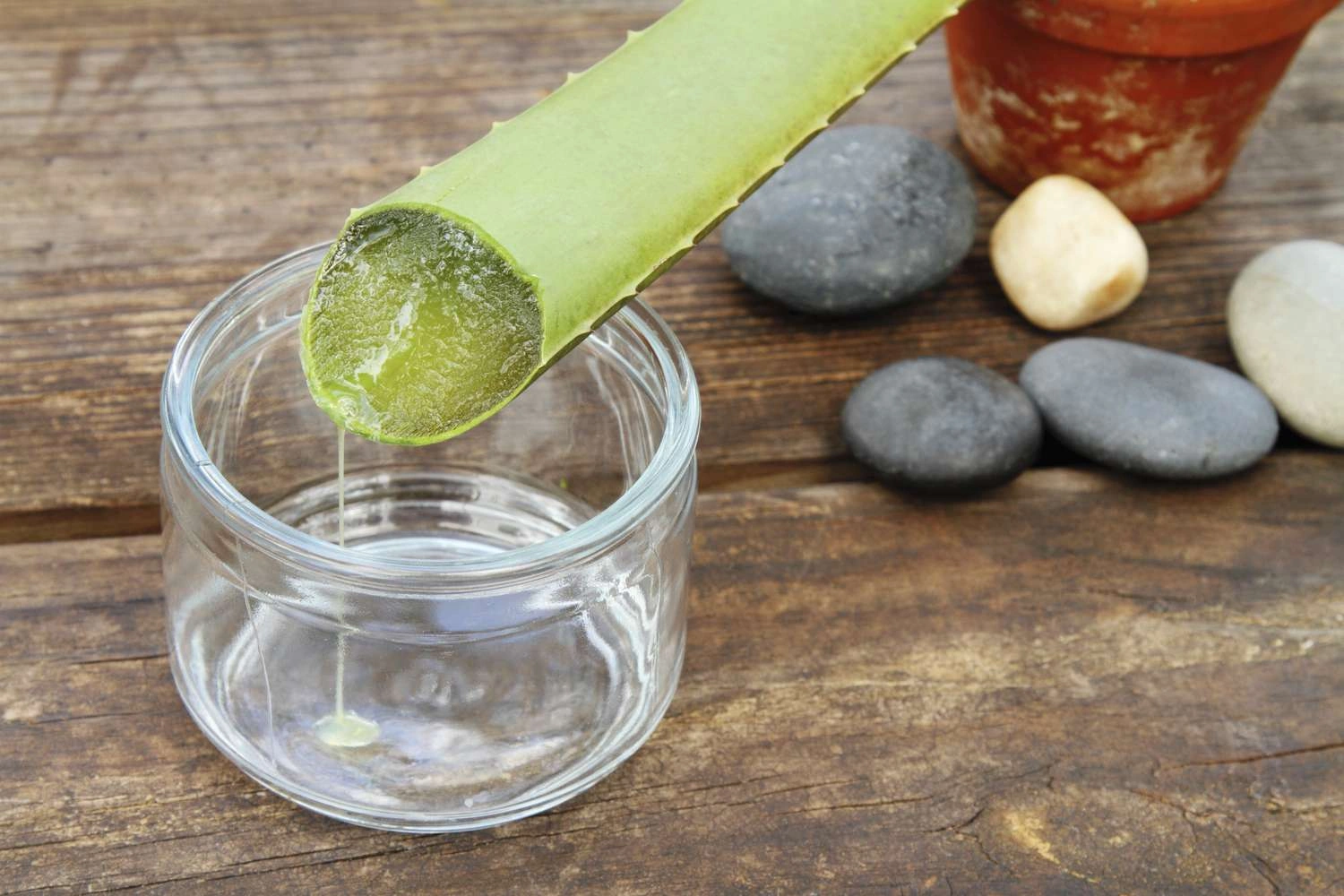
Gut Surprises and Aloe Hype
Okay, straight talk? Most people barely think about their colons…until one day, out of nowhere, their gut throws a total tantrum. Enter diverticulitis—those little pouches in your colon decide to throw a party, and bam: you’re stuck with pain, bloating, maybe even fever. If you’ve ever been hit with that, you’re probably on Google at 2am searching “is aloe vera juice good for diverticulitis” and hoping for a magic bullet.
Here’s something you might not know: over half of adults past sixty have these pouches (diverticulosis), and unfortunately, some end up with full-blown diverticulitis. Ouch. So, what now? Can sipping on that trending green juice—aloe vera—actually make things better? Let’s unpack the facts (real talk only, promise) and see what really helps when your gut is in revolt.
Aloe Vera: Trend or Real Gut Soothe?
So… Does Aloe Vera Juice Actually Help?
Raise your hand if you have a friend, aunt, or neighbor who swears by aloe vera for…well, everything. Sunburn? Slather it. Upset tummy? Drink it. Cat scratched your leg? Aloe it up. There are reasons this plant has a cult following.
But is aloe vera juice good for diverticulitis, specifically? Here’s where things get interesting. According to Healthline’s home remedy guide, aloe and foods with fiber or probiotics might help prevent future flare-ups, but it’s not a front-line fix during an acute attack. Some naturopaths, like those at Beyond Wellness, believe aloe vera’s anti-inflammatory powers may help tame colon inflammation—a reason some folks sip a bit before meals, hoping for smoother digestion and less cramping.
Have I tried it myself? Yep (naturopath aunt’s orders). I noticed my stomach felt a little calmer, but let’s be real—it wasn’t an overnight cure. More of a gentle support. And that seems to be the consensus: aloe could be a piece of your calming toolkit, but it’s certainly not a solo hero, especially with an angry, inflamed colon.
How Much Aloe Is Too Much?
Now, you can absolutely have too much of a good thing. Aloe juice works as a mild laxative. That sounds great when you’re clogged up (which happens a lot with diverticulitis), but if you’re running to the bathroom… maybe skip the aloe for a bit. Most natural health pros suggest starting with a quarter cup (60 ml) before meals, diluted with water, and always choosing purified, decolorized juice (by the way, avoid the yellow latex part, which is a powerful laxative and can cause cramps or worse) according to gut health research on aloe.
Comparing Aloe & Classic Gut Remedies
What’s Aloe Doing… That Plain Yogurt or Fiber Won’t?
Let’s put it in a table—because sometimes it’s fun to see things side-by-side when your brain is tired from too much WebMD.
| Remedy | How It Helps | When to Avoid |
|---|---|---|
| Aloe Vera Juice | Soothing, anti-inflammatory. Mild laxative effect; some folks say it cools their gut “burn.” | During diarrhea or if you have kidney issues; choose decolorized, purified juice. |
| Probiotics | Balance gut bacteria, help regularity, reinforce the colon “army.” | Some people get gas/bloating at first; start slow, pick strains like Lactobacillus casei. |
| Fiber Supplements | Keep things moving, prevent constipation (a big trigger for flares). | Skip during active flare-ups; add fiber gently or you’ll pay later (trust me!) |
See? Each one has its “moment.” I remember drinking aloe post-taco-night regret, then switching to a probiotic yogurt blitz when I felt…uh, blocked up. No shame—sometimes you use all the tools.
If you need a play-by-play for those extra-painful moments, my favorite walk-through is How to relieve diverticulitis pain fast (because honestly, no one wants to wait for calm when pain hits hard).
Everyday Eats: What Soothes (and Flares) Your Belly
Gentle Foods That Really Do Help
Let’s be honest: it’s not just what you add (like aloe) but also what you choose to chew daily. The biggest game-changers for me (and plenty of gut-warrior friends) are actually foods you find at the regular grocery store—no tinctures required.
- High-fiber fruits: pears, apples (with the skin!), strawberries.
- Sturdy veggies: broccoli, spinach, carrots. Steam or roast — easy on the gut muscles.
- Whole grains: brown rice, oats, quinoa.
- Legumes: lentils, chickpeas (start small, avoid if prone to gas at first).
If you’re smack in the middle of a flare? Switch it up: Clear liquids are your best friend—think broth, apple juice (no pulp), and yes, even Jell-O, just like at grandma’s. A liquid or low-fiber diet gives your gut some downtime to heal according to guideline experts.
Quick Peek: Flare Foods vs. Happy Gut Picks
| Hold Off On | Calm Gut Foods |
|---|---|
| Pizza, red meat, fried foods | Broth, clear juice, soft cooked rice |
| Nuts, seeds, popcorn (during activity) | Jell-O, gelatin |
| Soda, artificial sweeteners | Soft steamed veggies (as you recover) |
Picture this: my friend Max tried to “tough it out” with pizza during a flare—big mistake. We both learned the hard way: even a brave snack choice can end with a midnight hospital dash. Not fun. So yeah, baby steps with fiber once the storm passes.
If you want a real-world, pizza-free recovery story that’s actually inspiring (and not judgy), check out How I cured my diverticulitis. It’s all about small, steady swaps that add up big.
Beyond Aloe: Flare-Proofing Your Routine
Mixing Probiotics, Fiber & Aloe — Can They Team Up?
Short answer: totally. I used to think I had to choose—yogurt or aloe, chia seeds or oats—but the power move is weaving them together. According to the Beyond Wellness Center, aloe’s anti-inflammatory stuff, probiotics’ gut-balancing skills, and fiber’s “clean sweep” all play a part in keeping your colon chill.
Try this: mix a little aloe juice into your breakfast smoothie, throw in some probiotic yogurt, and have overnight oats on the side. Works like a gentle one-two punch. (That’s basically how I cured my diverticulitis energy.)
Handle with Care: When to Ease Up
But, slow your roll. If you’re in the middle of a raging episode—cramps, fever, the works—put the high-fiber on pause and stick to fluids. Aloe can be helpful, but if you feel your stomach is too sensitive (or you start getting weird cramps from it), just stop. Listen to your body!
When Aloe Juice Isn’t the Move
Let’s be real, aloe juice is not magic for everyone. If you’ve got diarrhea, lay off (remember how it can work as a laxative?). If you’re pregnant, a kid, or have kidney issues, better to steer clear—or ask your provider before swigging any new juice based on easyayurveda’s advice. Just because it’s plant-y, doesn’t mean it’s always safe.
That’s why all those “how to relieve diverticulitis pain fast” guides say: check with your doctor if anything feels off, and don’t try to be the hero with home stuff alone.
Real Stories, Real Hope
Can You Really Quiet a Rogue Gut Naturally?
Some folks swear they’ve turned things around with food and lifestyle—like that neighbor who now walks daily, downs water like it’s her job, and has a fridge stuffed with yogurt, aloe, and rainbow veggies. That’s not luck; that’s strategy.
My own gut saga? There were rough patches—mornings where the only thing I trusted was weak tea and Jell-O. But over time, small experiments with aloe, fiber boosts (always slowly!), and skipping trigger foods (farewell, greasy fries) helped me reclaim my social life and—honestly—even my mood.
If you think going “all natural” is only for health nuts, check out How I cured my diverticulitis for a real person’s journey. There are no magic bullets, but there’s hope and hacks that work. You just have to commit to a little bit of trial and error (and have humor about it too).
Try It, Don’t Rush It
Remember, whether you’re trying aloe (in reasonable sips!), adding more colorful plants, or just figuring out how to relieve diverticulitis pain fast when your belly’s got attitude… take it slow. Your colon didn’t get cranky overnight. It won’t mellow in a day, either.
Small Steps, Big Wins: Your Next Move
Whew, that’s a lot, right? Here’s the heart of it: aloe vera juice might help with diverticulitis symptoms—mostly by soothing and nudging your bowels if you’re constipated and keeping inflammation in check based on nutritionist advice. It’s gentle, simple, and pretty affordable—but don’t expect miracles. Pair it with other changes—a kinder fiber plan, smart probiotic choices, true rest when you hurt, and saying no to food bullies like soda and pizza during a flare.
And honestly? Be kind to yourself. Ask questions. Experiment, but carefully. A day at a time. Never be afraid to call your provider if pain gets wild or lingers—or if you just want to check if that new “miracle juice” is really safe for you.
Here’s my dare: try one gut-friendly swap this week. Maybe test drive that quarter cup of aloe before your next calm, homemade meal. See how you feel. Keep a notes app diary (yes, seriously). The best plan is the one that fits your life, not just the perfect one in a textbook.
And whenever you want to know how others made peace with their feisty bellies, jump over to How I cured my diverticulitis—it might be just what you need to keep going when things feel tough. Your gut will thank you (eventually).


















Leave a Reply
You must be logged in to post a comment.